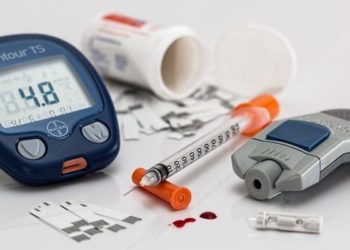Statin use for primary and secondary prevention is influenced by social determinants of health
1. In this cross-sectional study, rates of statin use for primary prevention were lower among non-Hispanic Black men and non-Mexican Hispanic women compared to non-Hispanic White men.
2. Rates of statin use for secondary prevention were highest among non-Hispanic White men, after adjusting for patient and structural factors.
Evidence Rating Level: 2 (Good)
Study Rundown: Statins reduce low-density lipoprotein cholesterol and are often the first-line agent for primary and secondary prevention of cardiovascular disease. While past studies point toward racial and gender disparities in statin use, there is a paucity of evidence for how disease severity and structural factors interact with these demographic characteristics. Understanding statin use for prevention in the context of patient and structural differences can improve public health policies on cardiovascular disease prevention. In this cross-sectional study, data from the 2015 to 2016 and 2017 to 2020 cycles of the National Health and Nutrition Examination Survey (NHANES) were used to evaluate statin use for primary and secondary prevention of cardiovascular disease. After adjusting for patient and structural factors, non-Hispanic Black men and non-Mexican Hispanic women had lower rates of statin use for primary prevention than non-Hispanic White men. For secondary prevention, rates of statin use were lower among non-Hispanic Black men, other/multiracial men, Mexican American women, non-Mexican Hispanic women, non-Hispanic White women, and non-Hispanic Black women compared to non-Hispanic White men, after adjusting for patient and structural factors. For limitations, the NHANES data did not report Native or Pacific Islander persons, Transgender or nonbinary gender identities, or geographic data, so analyses on these characteristics could not be done. Because the American College of Cardiology/American Heart Association (ACC/AHA) blood cholesterol guideline used in the study was released in 2013, data sources before and after this period could not be used.
Click to read the study in AIM
In-Depth [cross-sectional study]: In this cross-sectional study, data from the 2015 to 2016 and 2017 to 2020 cycles of the NHANES were used to evaluate statin use for primary and secondary prevention of cardiovascular disease. The NHANES consists of a randomly selected study population of 10,000 people living in the United States who were evaluated longitudinally through interviews and clinical follow-up. Patient gender, race, and ethnicity were self-reported. Statin use was extracted from a prescription medications questionnaire. Inclusion criteria for the analysis were patients who required statins for primary and secondary prevention as determined by the 2013 and 2018 ACC/AHA guidelines. Analyses controlled for patient factors (age, disease severity, and comorbidities) and structural factors (healthcare access, socioeconomic factors, and care process factors). For primary prevention, statin use had a lower prevalence among non-Hispanic Black men (adjusted prevalence ratio [aPR], 0.73; 95% Confidence Intervals [CI], 0.59 to 0.88) and non-Mexican Hispanic women (aPR, 0.74; 95% CI, 0.53 to 0.95) compared to non-Hispanic White men, after adjusting for patient and structural factors. For secondary prevention, statin use had lower prevalence among non-Hispanic Black men, other/multiracial men, Mexican American women, non-Mexican Hispanic women, non-Hispanic White women, and non-Hispanic Black women compared to non-Hispanic White men. The aPRs ranged from 0.36 for Mexican-American women to 0.81 for non-Hispanic Black men. The results of this study demonstrate that there are ethnic, racial, and gender disparities in statin use for cardiovascular disease prevention, even after controlling for patient and structural factors.
Image: PD
©2023 2 Minute Medicine, Inc. All rights reserved. No works may be reproduced without expressed written consent from 2 Minute Medicine, Inc. Inquire about licensing here. No article should be construed as medical advice and is not intended as such by the authors or by 2 Minute Medicine, Inc.







![CRISPR-mediated gene activation rescues obesity caused by haploinsufficiency [PreClinical]](https://www.2minutemedicine.com/wp-content/uploads/2019/03/CRISPR-75x75.jpg)